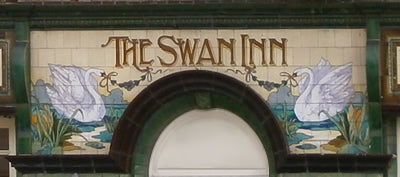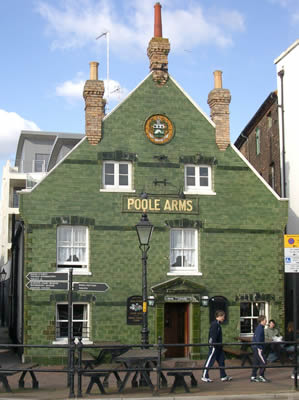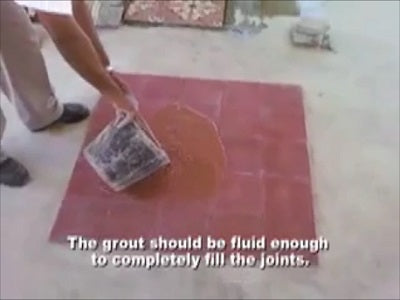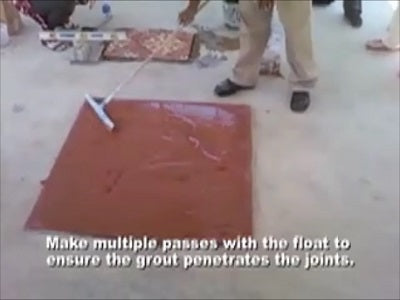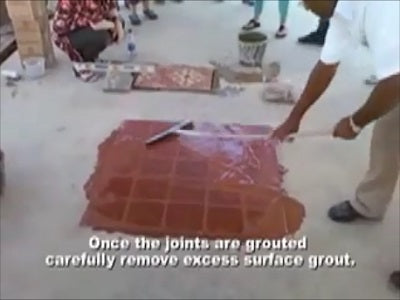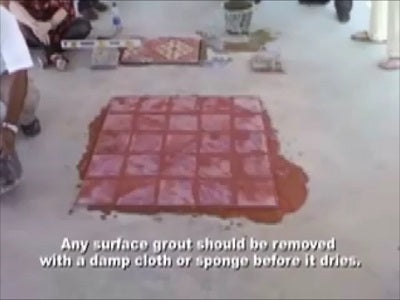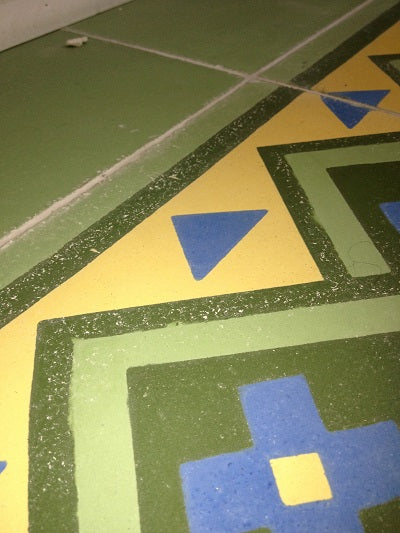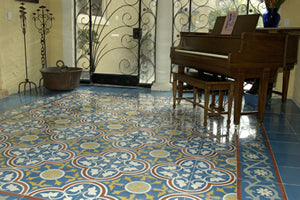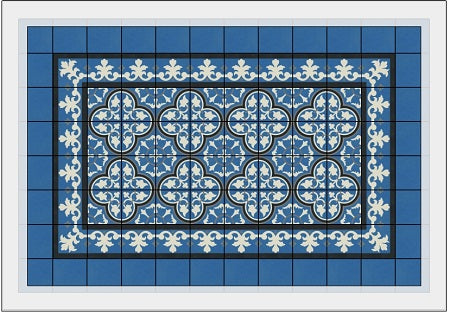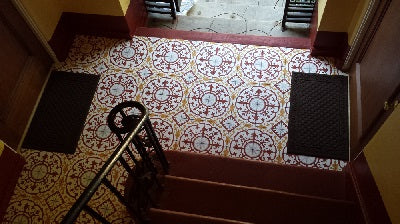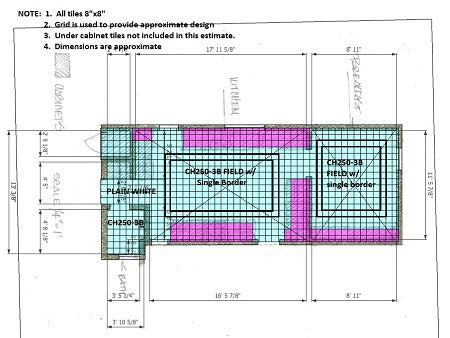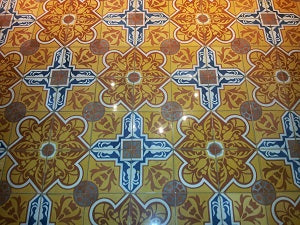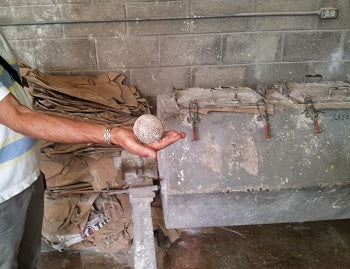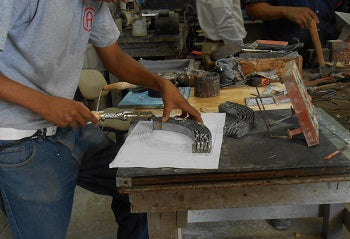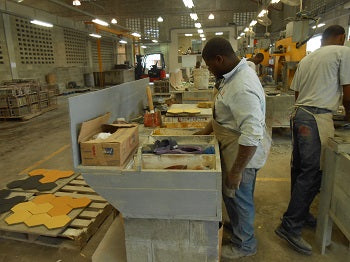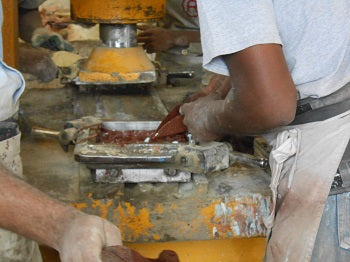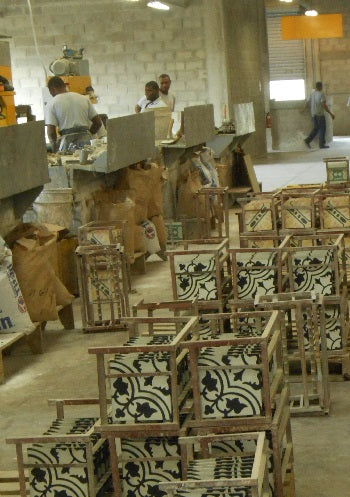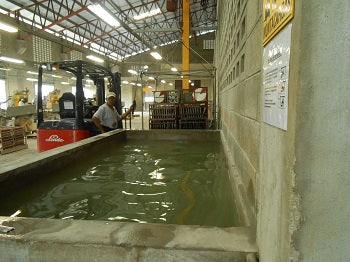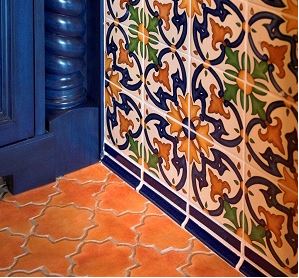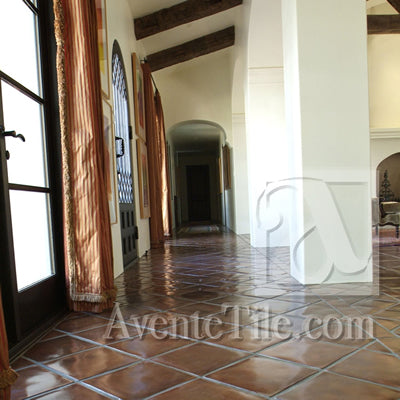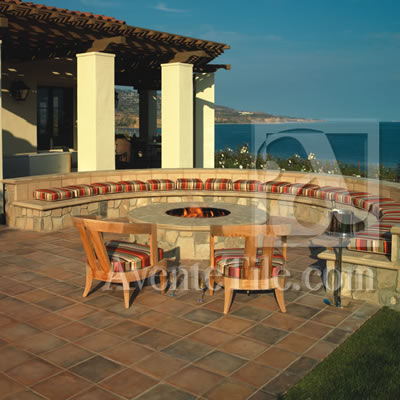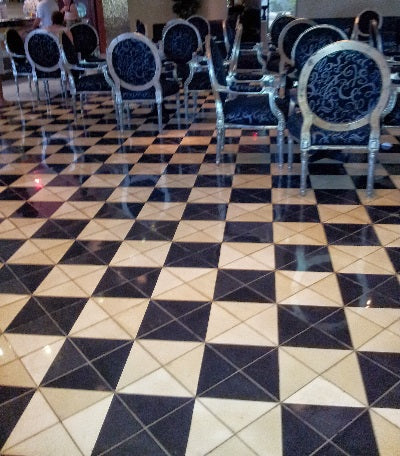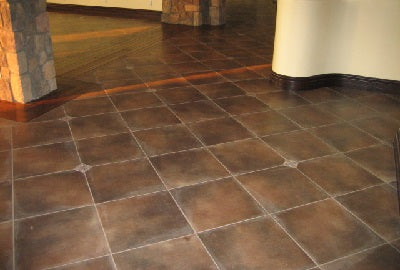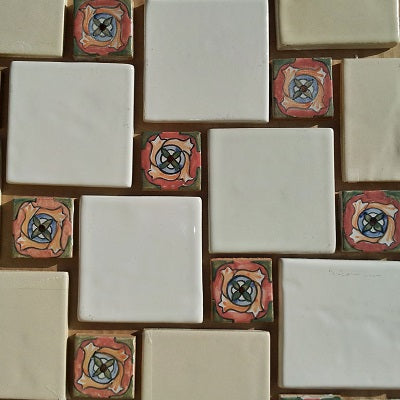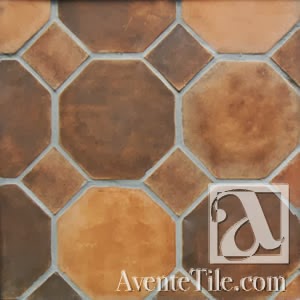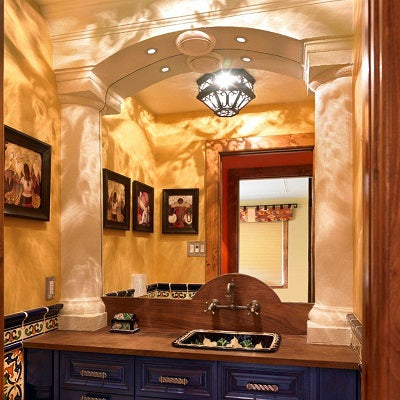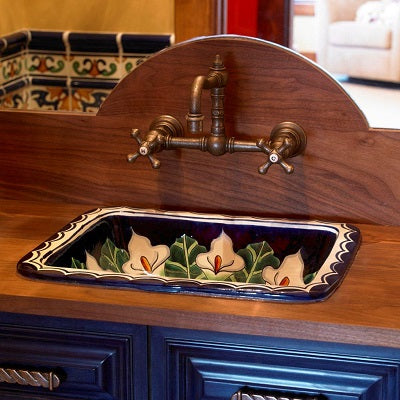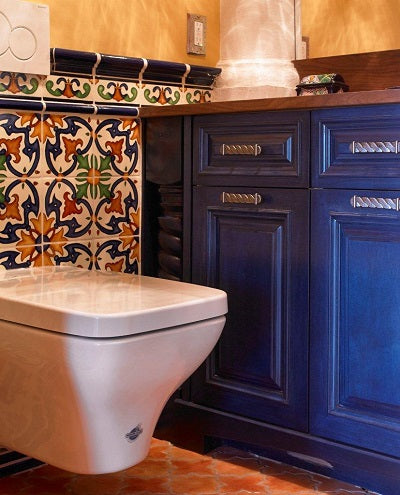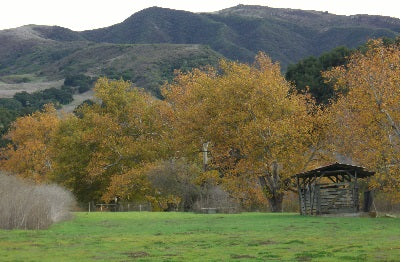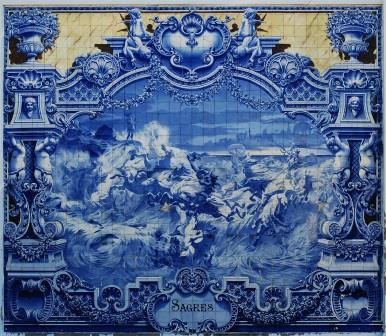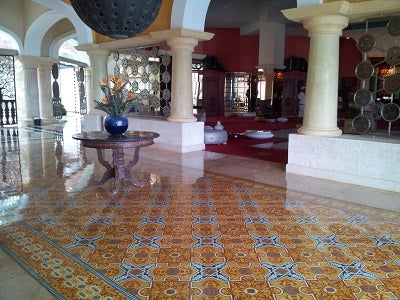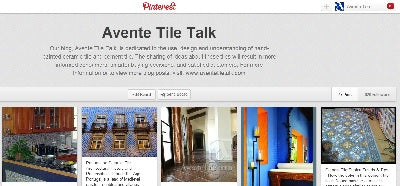I just returned from a business trip in the Dominican Republic meeting with the owners of the Aguayo Cement Tile Factory.
Aguayo Cement Tiles are well known for their quality, large color palette, and commitment to new design. I've included Aguayo Cement Tiles in
Avente Tile's line of hand-crafted tiles since I started the company more than a decade ago.
![Cuban Tiles from the Aguayo Factory Cuban Tiles from the Aguayo Factory]() |
| Cuban Tiles from the Aguayo Cement Tile Factory. |
The trip was a great opportunity to discuss new product lines, manufacturing process improvements, and the ways Avente and Aguayo can work together to improve upon the service we offer to you, our customer. Although I had visited the factory and installations in this wonderful Caribbean island of Hispaniola before, each visit has always been filled with surprises, thanks to my very gracious host, Jorge Aguayo and his family. The Aguayo's have been making cement tiles for three generations. Their dedication shows by way of a top-notch manufacturing facility, their tile quality, and their passion for making each tile right. They always go out of their way to not only welcome me to the factory, but also into their family, as well as all that this island has to offer.
It's through Jorge's kindness and warmth that allows me to share both the inner workings of a cement tile factory, and bring well-deserved attention to the hands that touch each and every tile. First, thank you, Jorge, for sharing so much about cement tile with me and allowing me to photograph and share what three generations have labored to create.
I hope you enjoy this tour of the Aguayo Cement Tile Factory. You'll walk away with a better appreciation and understanding of why handmade cement tile is truly a labor of love.
Mixing the Color Layer of Cement Tile
![Calcium Carbonate in bins will be weighed and mixed to form the color layer of cement tile Calcium Carbonate in bins will be weighed and mixed to form the color layer of cement tile]() |
| The calcium carbonate in these bins will first be weighed, and then mixed to form the color layer of cement tile. |
The color layer of handmade cement tiles is about 1/8" thick. The color layer is made from a mixture of the following:
- White Portland cement
- Marble dust
- Silica sand
- Calcium carbonate
- Mineral pigments (such as iron, cobalt and chromium oxides).
![Mineral pigments are mixed to make the 90 colors available for Aguayo Cement Tiles. Mineral pigments are mixed to make the 90 colors available for Aguayo Cement Tiles.]() |
| Mineral pigments are mixed to make the 90 colors available. |
The color layer is prepared in batches and every component is weighed in order to achieve color consistency. The color is mixed in a horizontal mixer that guarantees the homogenization of the mixture. The large ball (shown below) is used to help achieve these manufacturing requirements.
![The color layer materials are mixed in the horizontal mixer. The color layer materials are mixed in the horizontal mixer.]() |
| The color layer materials are mixed in the horizontal mixer. |
For small batches, strike-offs, and samples, only a small amount of color is mixed in a bucket and blended with a "hand mixer."
Creating a Pattern - Cement Tile Molds
Patterned tiles are created using a mold that follows the lines of the pattern.
![Cement tile mold being worked and checked against pattern. Cement tile mold being worked and checked against pattern.]() |
| A cement tile mold is being worked on and checked against a pattern. |
Here's the cement tile mold library where molds are housed for existing patterns. If you want a new pattern or pattern in a different size, then a custom mold will need to be created.
![Avente Tile owner Bill Buyok (foreground), looks at some of the Aguayo cement tile molds. Avente Tile owner Bill Buyok (foreground), looks at some of the Aguayo cement tile molds.]() |
| Avente Tile owner Bill Buyok (foreground), looks at some of the Aguayo cement tile molds. |
Hand-Making a Cement Tile
Each station is manned and operated by an expert cement tile maker and a
mi ayudante, or my helper, in Spanish. The helper allows the expert tile maker to focus on getting the right colors in the mold slots, keeps the liquid cement tile bins full, and makes sure there is plenty of sand for the second and third layer. Without a helper, the time to make a tile would more than double.
![Each expert cement tile maker has an assist. Each expert cement tile maker has an assist.]() |
| Each expert cement tile maker has an assist. |
The color is then mixed with water in mixing bins located at each station.
![Color is mixed with water at the tile maker's stations. Color is mixed with water at the tile maker's stations.]() |
| Color is mixed with water at the tile maker's stations. |
The colored cement is hand-poured into the different sections of the molds. The thickness of the color layer will always be between 3-5 millimeters.
![The colored cement is hand-poured into the different sections of the molds. The colored cement is hand-poured into the different sections of the molds.]() |
| The colored cement is hand-poured into the different sections of the molds. |
Two layers of cement and sand are poured on top of the color layer to not only add strength, but also to absorb water from the color layer.
![Two layers of cement and sand are poured on top of the color layer. Two layers of cement and sand are poured on top of the color layer]() |
| Two layers of cement and sand are poured on top of the color layer. |
Finally, the cement tile is pressed using a hydraulic press, which applies 1,700 PSI of pressure. The tiles are then placed on racks as they come off the line.
![The cement tiles are placed on racks as they come off the line. The cement tiles are placed on racks as they come off the line.]() |
| The cement tiles are placed on racks as they come off the line. |
The following day, the cement tiles are soaked in water in order to achieve water saturation and hardness. The water bath guarantees proper cement hydration.
![Racked cement tile are lowered into this water bath. Racked cement tile are lowered into this water bath.]() |
| Racked cement tile are lowered into this water bath. |
The tiles are left to dry for 10 days and then hand-inspected. After 28 days from start of manufacturing, the cement tile's color surface will have obtained 98% of its hardness and is usually ready to be installed. It takes about two weeks for the tiles to arrive in Miami after they leave the port of Santo Domingo, including about one week for customs.
![Tiles leaving the factory on an Aguayo truck for the Port of Santo Domingo Tiles leaving the factory on an Aguayo truck for the Port of Santo Domingo]() |
| Tiles leaving the factory on an Aguayo truck for the Port of Santo Domingo. |
I hope you enjoyed the Aguayo Cement Tile Factory tour. You can see why making these tiles takes at least six to eight weeks for manufacturing and delivery. Now that you have an appreciation for the process, let us know what Aguayo Cement Tile pattern and colors you'll be using for your next project. We've made it easy for you! Just stop by our
Avente Tile 's Aguayo Cement Tile Information Center!
